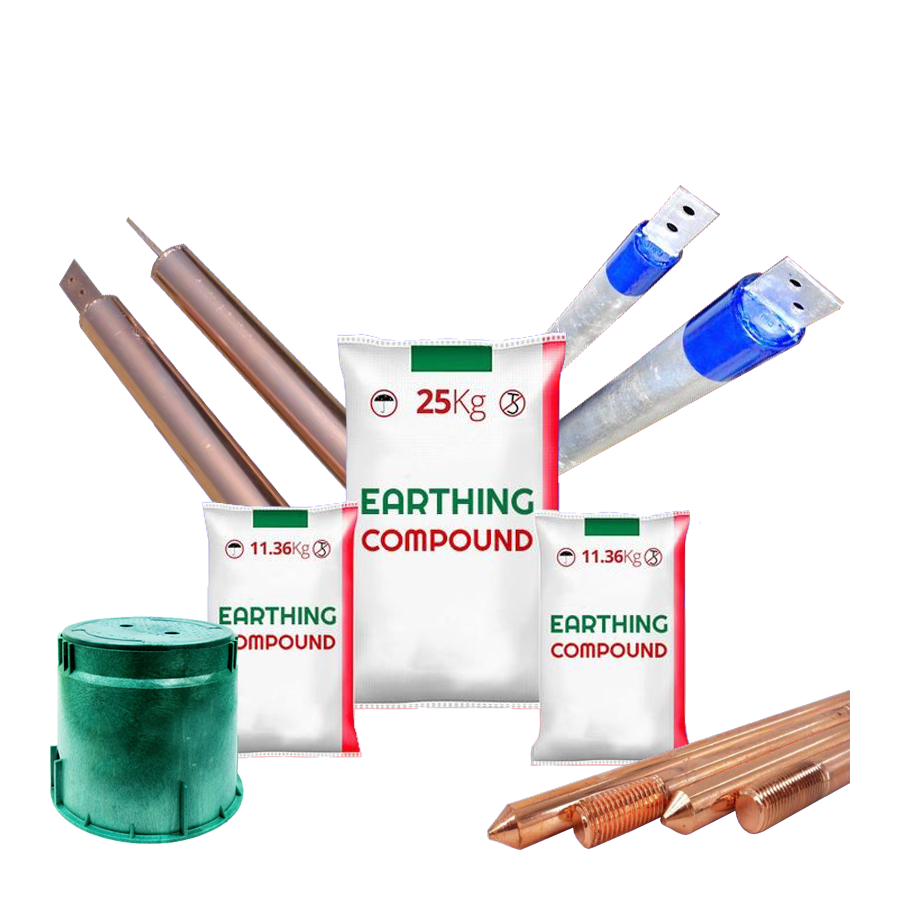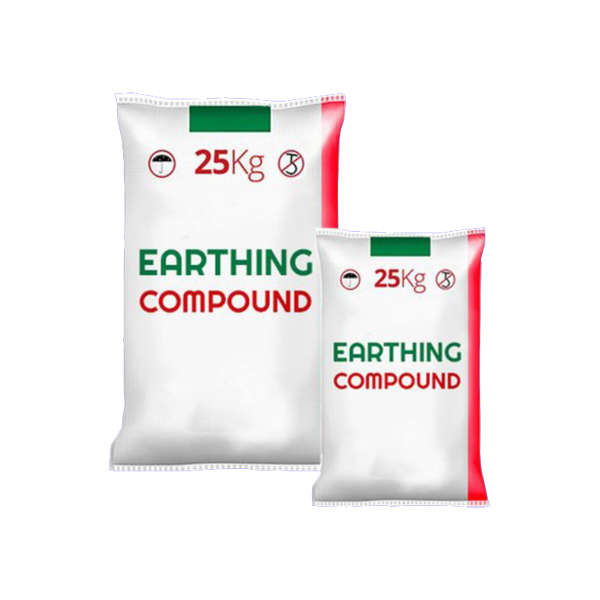Earthing is an essential aspect of electrical systems, as it protects people and equipment from the dangers of electrical faults. Electrical faults can occur due to various reasons, such as lightning strikes, equipment failure, and insulation breakdown. In such situations, earthing provides a low impedance path to ground, which prevents electrical currents from flowing through people and equipment. There are several types of earthing systems, and in this article, we will discuss chemical earthing, which is considered the best type of earthing. We will also discuss the components of chemical earthing, such as copper bonded rods, earth enhancement compounds, and FRP earth pit covers, which make it superior to conventional earthing.
Conventional Earthing
Conventional earthing involves burying a metal conductor, such as a copper rod or a galvanized iron pipe, in the ground. The conductor is connected to the electrical system, and its other end is buried deep in the ground. The depth of the conductor depends on several factors, such as the type of soil, the moisture content, and the electrical load. The objective of conventional earthing is to provide a low impedance path to ground, which limits the voltage rise in the event of an electrical fault.
Conventional earthing has several limitations, which make it less effective compared to chemical earthing. Some of these limitations include:
Corrosion – Metal conductors used in conventional earthing are prone to corrosion, which reduces their effectiveness over time. Corrosion can also lead to an increase in the resistance of the conductor, which results in higher voltage drops.
Soil Conditions – The effectiveness of conventional earthing depends on soil conditions, such as moisture content and soil resistivity. In dry soils, the resistance of the conductor may increase, reducing its effectiveness.
Maintenance – Conventional earthing requires regular maintenance, such as cleaning and inspection, to ensure its effectiveness. Neglecting maintenance can lead to corrosion and increased resistance.
Chemical Earthing
Chemical earthing, also known as maintenance-free earthing, is a modern type of earthing that overcomes the limitations of conventional earthing. Chemical earthing involves burying a copper bonded rod in the ground, which is filled with a conductive compound known as earth enhancement compound (EEC). The EEC is a mixture of conductive salts and minerals that provide a low impedance path to ground, even in dry soils. The EEC is also resistant to corrosion, which ensures the longevity of the earthing system.
Components of Chemical Earthing
Copper Bonded Rods
Copper bonded rods are the main component of chemical earthing. These rods are made by bonding a layer of copper to a steel core using a high-pressure process. The copper layer provides excellent conductivity, while the steel core provides strength and durability. Copper bonded rods are available in different lengths and diameters, depending on the electrical load and soil conditions.
Earth Enhancement Compound (EEC)
The earth enhancement compound is a mixture of conductive salts and minerals that are used to fill the borehole around the copper bonded rod. The EEC is designed to improve the conductivity of the soil, even in dry conditions. The EEC is also resistant to corrosion, which ensures the longevity of the earthing system. The EEC is available in different grades, depending on the soil conditions and electrical load.
FRP Earth Pit Cover
FRP earth pit covers are used to cover the borehole and the EEC to protect them from environmental factors, such as rain, dust, and animals. FRP (Fiber Reinforced Plastic) is a lightweight and durable material that is resistant to corrosion and UV radiation. FRP earth pit covers are available in different sizes and shapes, depending on the size of the borehole and the electrical load.
Advantages of Chemical Earthing
Chemical earthing has several advantages over conventional earthing, some of which include:
Low Impedance
Chemical earthing provides a low impedance path to ground, which limits the voltage rise in the event of an electrical fault. This reduces the risk of electrical shocks and equipment damage.
Improved Conductivity
The earth enhancement compound used in chemical earthing improves the conductivity of the soil, even in dry conditions. This ensures the effectiveness of the earthing system, regardless of the soil conditions.
Resistance to Corrosion
Copper bonded rods used in chemical earthing are resistant to corrosion, which ensures the longevity of the earthing system. The EEC is also resistant to corrosion, which further improves the effectiveness of the earthing system.
Maintenance-Free
Chemical earthing is a maintenance-free system, which reduces the maintenance costs and ensures the reliability of the earthing system.
Easy Installation
Chemical earthing is easy to install and requires minimal excavation. The installation process involves drilling a borehole, inserting the copper bonded rod, and filling the borehole with the earth enhancement compound. The FRP earth pit cover is then installed to protect the borehole and the EEC.
Applications of Chemical Earthing
Chemical earthing is used in a wide range of applications, some of which include:
Telecommunications – Chemical earthing is used in telecommunications systems to protect the equipment from lightning strikes and electrical faults. The low impedance path to ground provided by chemical earthing ensures the safety of the equipment and the personnel.
Power Generation – Chemical earthing is used in power generation systems to protect the generators, transformers, and switchgear from electrical faults. The improved conductivity and resistance to corrosion provided by chemical earthing ensure the reliability of the electrical system.
Data Centers – Chemical earthing is used in data centers to protect the servers and other equipment from electrical faults. The low impedance path to ground provided by chemical earthing ensures the safety of the equipment and the data stored in the servers.
Industrial Applications – Chemical earthing is used in industrial applications, such as chemical plants, oil and gas facilities, and manufacturing plants. The improved conductivity and resistance to corrosion provided by chemical earthing ensure the safety of the personnel and the equipment.
Chemical earthing is the best type of earthing system, as it overcomes the limitations of conventional earthing and provides a low impedance path to ground. The components of chemical earthing, such as copper bonded rods, earth enhancement compounds, and FRP earth pit covers, make it superior to conventional earthing in terms of conductivity, corrosion resistance, and maintenance-free operation. Chemical earthing is used in a wide range of applications, such as telecommunications, power generation, data centers, and industrial applications, to ensure the safety of the equipment and the personnel. If you are considering earthing for your electrical system, chemical earthing is the best choice for improved reliability and safety.

